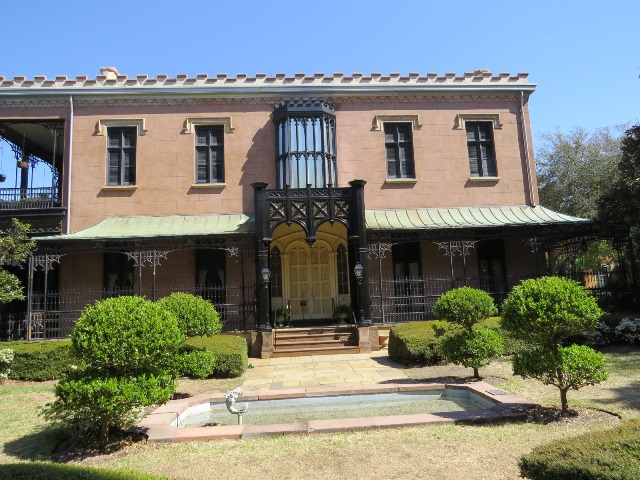General Sherman’s Christmas in Savannah

Despite the dire predictions of what the terrible Sherman might do to the fine city of Savannah once he got his claws on it, the people of the city soon found that the lion had turned pussycat. Of course, anything of value to the Confederate war effort would be confiscated or destroyed, but the property of civilians was generally respected and most of the city was left intact.
Confederate Lt. General William J. Hardee had been in command of Savannah with about 9,000 men. It had never been his plan to try to hold Savannah. He knew that he was effectively surrounded, but he wanted enough time to strip the city of anything of military value and to extricate his garrison force intact. To this end, while he had been holding Sherman at bay, Hardee’s engineers build a system of rickety bridges that could first connect from Broad Street in Savannah to Hutchinson’s Island. The second span connected to Pennyworth Island; the third to the South Carolina bank. It amounted to a mile of awkward, rail-less spans, but it was sturdy enough to do the job before being destroyed behind the last of the Confederate troops.
The movement was not exactly a secret though. In fact, Union General O.O. Howard knew of the movement, but was willing to allow it to proceed. A large haul of prisoners of war would have been counter-productive, he felt, and doubtless he felt his men needed a rest after the long march from Atlanta. Not everyone felt the same way. A private in his army wrote, “The Johnnys got out last night. I think our officers knew they were going and did not try to stop them,” the young man lamented. “If we had pushed the fighting on our right front a little harder we might have cut them off an captured the whole of them.”
Mayor Richard Arnold and his alderman had the unpleasant duty of formally surrendering the city, with the hope that a civil welcome might help to prevent the utter destruction of their homes. Humiliatingly, they had to attend to this on foot as Confederate forces had stripped the place of every last horse. It is interesting to note that while Union forces treated Arnold and his committee with magnanimity, the mayor’s comrades did not. “An Arnold was the solitary traitor of the old Revolution,” the Richmond Dispatch screeched, “An Arnold is the first person in this one who has basely gone over to the enemy.”

Sherman was actually a little late to the party. He had been with the navy conferring with Major General John G. Foster, commander of the Department of the South, when Savannah was evacuated. By the time he reached the heart of the city, Gens. Howard and Slocum had already taken possession. As he rode into the city, he was pleased to find that all was peaceful and in fine order. His subordinates had moved quickly to keep order and prevent looting. He soon assigned Brigadier General John W. Geary the job of Military Governor of Savannah, who would be breveted a Major General for his fine performance. The people of Savannah apparently agreed with this assessment. Later they formally tendered their thanks for his kindness and even-handed treatment.
Sherman enjoyed a fine holiday in Savannah. He found it charming and handsome, admiring the “streets and parks…lined with the handsomest shade-trees.” Within minutes of arriving at Howard’s headquarters, Sherman was offered the use of a fine mansion for his own headquarters. An elderly British cotton merchant, Mr. Charles Green, generously offered his property for the general’s use. This may have been a bit self-serving on Green’s part, since he knew that it would assure that his property was protected and in good order when it was returned to him.
“Our Military Santa Claus,” as the Chicago Tribune dubbed him, enjoyed a sumptuous Christmas dinner at the Green mansion with this staff. After attending church service at St. John’s Episcopal church near his headquarters, Sherman and his staff attended to army matters until evening when about twenty officers, plus Mr. Green, gathered around the table to enjoy roast turkey, “a splendid chicken pie, cold slaw, celery, sweet potatoes, turnips, champagne” and many assorted desserts.

After a quiet and tasteful holiday, Sherman returned to the business of war. He began plotting a course for his army through South Carolina. He reflected that while Georgia had been handled with gloves – though the people of that state would not have characterized it that way – he feared that his men would wish to deal with South Carolina without gloves. The Cradle of Secession would soon feel the hard hand of war as the terrible conflict dragged into its fourth year.
1 Response to General Sherman’s Christmas in Savannah